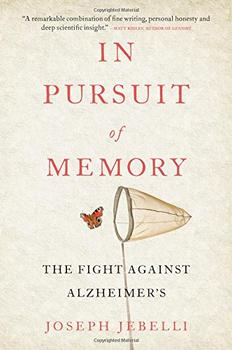Did You Know? Eight Alzheimer's Facts
This article relates to In Pursuit of Memory

Joseph Jebelli's In Pursuit of Memory is full of fascinating facts about Alzheimer's disease. We've picked out a handful you might not know already.
- The specific mutation associated with Alzheimer's disease was discovered on chromosome 21 in 1991. Because Down's syndrome also involves chromosome 21 (specifically, an extra copy of it - which is why Down's syndrome is also known as trisomy 21), virtually all Down's patients will develop Alzheimer's.
- William Utermohlen was an American artist who lived in London and found out in 1995 that he had Alzheimer's. Over the next five years he painted a series of self-portraits that became increasingly blurry, reflecting his decline.
- Measures that may help prevent Alzheimer's include avoiding stress, following a blood pressure-lowering Mediterranean diet, moderate exercise, good sleep, and brain training exercises. Although the evidence is not water-tight, Jebelli convincingly argues that one might as well go ahead and follow these sensible guidelines anyway.
- The transplantation of stem cells and purified blood proteins are two regenerative treatments currently being researched.
- It is thought that Kuru and Creutzfeldt-Jakob, two other degenerative brain diseases, may be the evolutionary origin of Alzheimer's.
- Visual Alzheimer's (or posterior cortical atrophy) is a totally different form of the disease and starts not with memory loss but with brain processing defects that might be confused for vision problems. (For instance, an inability to pour water into a glass or to follow a path.) This is the kind of Alzheimer's that the late British fantasy author Terry Pratchett suffered from.
- India has extremely low dementia rates, while Colombia has a very high Alzheimer's rate. In his book Jebelli visits both countries as case studies to try to investigate why. He notes that in Colombia there is a specific mutation known as Paisa that is widespread, often in combination with epilepsy. Jebelli wonders if this is what novelist Gabriel García Márquez had in mind when he described a character's memory loss and the community's attempts to help him out by painting the names and uses of objects on them in One Hundred Years of Solitude: "Thus they went on living in a reality that was slipping away, momentarily captured by words, but which would escape irremediably when they forgot the values of the written letters."
- Alzheimer's research is, Jebelli asserts, "woefully underfunded" – he notes that in the USA it has been reported that Americans spend more on popcorn, Viagra and anti-ageing creams than on Alzheimer's research.
Filed under Medicine, Science and Tech
 This article relates to In Pursuit of Memory.
It first ran in the November 15, 2017
issue of BookBrowse Recommends.
This article relates to In Pursuit of Memory.
It first ran in the November 15, 2017
issue of BookBrowse Recommends.
Membership Advantages
- Reviews
- "Beyond the Book" articles
- Free books to read and review (US only)
- Find books by time period, setting & theme
- Read-alike suggestions by book and author
- Book club discussions
- and much more!
-
Just $60 for 12 months or
$20 for 3 months.
- More about membership!

![]() This article relates to In Pursuit of Memory.
It first ran in the November 15, 2017
issue of BookBrowse Recommends.
This article relates to In Pursuit of Memory.
It first ran in the November 15, 2017
issue of BookBrowse Recommends.